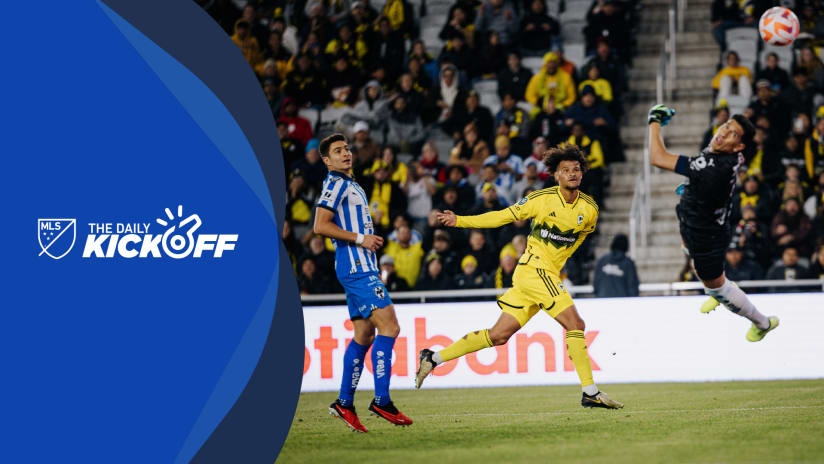| Average Age of MLS Teams | ||||
| Team | 2012 | 2011 | Diff | |
| VAN | 29.71 | 26.35 | 3.36 | |
| COL | 29.19 | 28.25 | 0.94 | |
| CHV | 29.06 | 27.79 | 1.27 | |
| LA | 28.76 | 27.73 | 1.03 | |
| NY | 28.53 | 29.05 | -0.51 | |
| CHI | 28.52 | 26.23 | 2.28 | |
| DAL | 28.50 | 27.57 | 0.92 | |
| SJ | 28.48 | 27.76 | 0.73 | |
| MTL | 28.37 | N/A | N/A | |
| HOU | 27.86 | 26.51 | 1.35 | |
| SEA | 27.83 | 28.38 | -0.54 | |
| RSL | 27.65 | 27.91 | -0.26 | |
| SKC | 27.43 | 26.80 | 0.63 | |
| DC | 27.37 | 25.18 | 2.19 | |
| NE | 27.30 | 26.52 | 0.77 | |
| CLB | 27.06 | 26.92 | 0.14 | |
| TOR | 26.25 | 25.44 | 0.81 | |
| POR | 26.24 | 25.78 | 0.46 | |
| PHI | 26.18 | 26.98 | -0.80 | |
We’re already one month into the 2012 regular season, so it’s not too early to take a look at some of this year’s team statistics and see how they compare to last year’s. Today, let’s take a look at the average ages of each team, as well as the percentage of minutes played by non-domestic players.
1. What’s the average age of each 2012 MLS team?
First things first: The big news is that with about one-seventh of the season complete, the league-wide average age is 27.94 years old. Last year’s ended up at 27.06, which means that it’s on pace for a 3.3 percent increase. That may not seem like a lot, but the average has never moved more than 1.3 percent in either direction in a single season in league history.
Indeed, after two years of getting younger, this season is on pace to surpass 1998’s 27.78 average as the oldest on record. Although, it’s likely that it will decrease by the year’s end, so it’s not a sure thing. The 2011 season’s final average ended up being about a 10th of a year lower than its first month. Some of this may be explained by the Olympic qualifying call-ups, but more than half of the MLS players that took part weren’t starting anyway.
Fourteen out of 18 returning MLS teams are fielding older teams than a year ago, and three of those are older by at least two years. D.C. United had one of the youngest teams in league history a year ago, so it’s not unexpected that they went up. They remain in the bottom half of the age table. Chicago’s midseason acquisitions last year include Dan Gargan, Sebastián Grazzini, and Pável Pardo, who are all at least 29 and are now with the team from First Kick.
Vancouver, meanwhile, have improved in the table so far while fielding a team more than three years older than last year’s. That would be a record for a one-year difference and, who knows, the 2002 Colorado Rapids record for oldest team (29.56) may be within reach.
The Philadelphia Union, no longer with the services of Sébastien Le Toux and Fayrd Mondragón, are now the league’s youngest team of 2012.
All age numbers are calculated using players’ ages on July 1 of the season, and also take into account minutes played.
2. What percentage of playing time do domestic and foreign players get?
The percentage of minutes played by Americans is slightly down from a year ago: 51.7 percent, vs. 55.8 percent a year ago. That comes after a small increase a year ago. The first instinct may be to look to the league’s newest Canadian expansion team, but Montreal actually use a slightly higher than average amount of Americans (52 percent). Again, the Olympic call-ups probably mean those numbers are a bit lower at the moment than they’ll end up.
| Percentage of Minutes Played by Domestic Players | ||||
| Team | 2012 | 2011 | Diff | |
| NE | 77.1% | 66.7% | 10.4% | |
| SJ | 70.5% | 79.2% | -8.7% | |
| HOU | 69.1% | 73.8% | -4.7% | |
| CHV | 63.1% | 54.4% | 8.7% | |
| LA | 59.4% | 58.9% | 0.5% | |
| COL | 58.7% | 62.8% | -4.1% | |
| RSL | 57.1% | 59.3% | -2.2% | |
| DCU | 56.6% | 78.3% | -21.8% | |
| FCD | 55.7% | 62.0% | -6.3% | |
| SKC | 54.1% | 50.8% | 3.4% | |
| CLB | 50.7% | 58.9% | -8.3% | |
| PHI | 48.8% | 55.2% | -6.5% | |
| POR | 42.4% | 50.9% | -8.5% | |
| SEA | 41.2% | 55.5% | -14.2% | |
| CHI | 35.9% | 41.4% | -5.5% | |
| NY | 32.3% | 26.7% | 5.6% | |
| TOR | 21.8% | 17.8% | 4.0% | |
| MTL | 5.1% | N/A | N/A | |
| VAN | 0.0% | 4.6% | -4.6% | |
Canadians have ended up with three to four percent of the minutes every year since 2007, and this year’s percentage of 3.11 percent so far is in line with that.
On a team by team basis, things haven’t changed too much. Only three teams are using 10 percent fewer or more domestic players. D.C. United and Seattle are using fewer, while New England have used more. The Revolution are in first in the domestic minutes played table, just ahead of San Jose, who have led in each of the past two seasons.
Interestingly, New England just changed from a foreign head coach (Steve Nicol) to an American (Jay Heaps). Are American coaches more likely to use American players? That’s a subject for a future column to answer. Meanwhile, New York are on pace to have the lowest domestic percentage of any American team for the fourth year in a row.
Each player is considered to have one nationality for the purposes of this data: The country they play for internationally. If there is none, then their place of birth was used. There are actually quite a few American players who have citizenship but play for another country or were born elsewhere (like Shalrie Joseph), so the total percentage of Americans is higher than these numbers show.
3. Colombia’s influence growing even higher in MLS
Last year, Colombian players were used more than any other nationality besides American, to the tune of nearly 4.5 percent of total minutes. That was more than Canada could boast, and one of the highest single season totals of any non-American country in league history.
This year, in addition to the likes of Juan Pablo Ángel, Fredy Montero and Jámison Olave, 12 of the 79 newcomers to MLS (who’ve played in the regular season so far) come from the South American soccer hotbed. Plus, there’s the returning Wilman Conde.
That’s led to a total of 6.31 percent of minutes going to Colombians in 2012. Now, the country has always been supplying quality players to MLS; David Ferreira, Oscar Pareja and Carlos Valderrama, to name a few. But no country’s ever had a season-long total quite that high. Previously, the best was Argentina’s 5.55 percent in 2008, fittingly in the same season where Guillermo Barros Schelotto won the MVP award. So that’s another record to watch out for as the season progresses.
Previously, Colombia has led the league in non-American minutes four times. The other countries to do it are Canada and Jamaica (three times), Argentina and Mexico (twice each), and El Salvador and Nigeria (once each).











